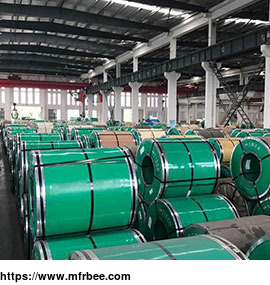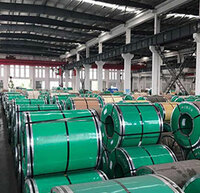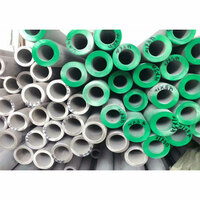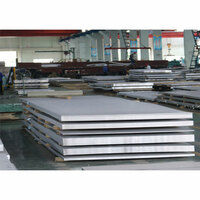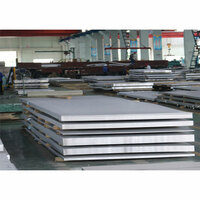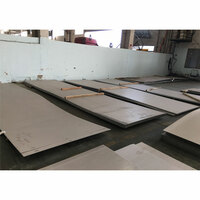Stainless Steel Coil
Specifications
Wuxi SDO stainless steel Co., Ltd is one of stainless steel suppliers. Now we have advanced technology and a good reputation for our top quality. Our products, including astm a240 material type 304
and other kinds of stainless coil can satisfy our clients from all over the world. Stainless steel coil is a flexible industrial construction material made of stainless steel is generally used for
mechanical production and industrial construction. Same as the stainless steel plate, the coil also has two kinds of techniques--hot rolled and cold rolled. So what's the difference between these
two techniques? We will let you know in the following.
Stainless steel 304 VS astm a240 material type 304
Stainless steel 304 is one of the most widely used stainless steel materials available at present. It has excellent forming and welding characteristics. Stainless steel 304 and ASTM a240 material
type 304 play a leading role in the manufacture of stainless steel products. 304 stainless steel plates can be braked to form a variety of components for industrial, construction and transportation
applications. The a240 material is a low-carbon version of 304. Although 304 and a240 material plates have similar chemical properties, they all contain the same amount of manganese, silicon,
phosphorus, sulfur and nitrogen.
The following are the main differences in chemical composition between the two kinds of stainless steel plates:
There are some key differences between 304 and astm a240 type 304. One of these key characteristics is the content of carbon and nickel. First of all, Stainless steel 304contains up to 0.08%
carbon, up to 2.0% manganese and 0.75% silicon, no more than 0.045% phosphorus, no more than 0.03% sulfur, and 18.0% 20% chromium.
Stainless steel 304 consists of 8.0% to 10.5% nickel and up to 0.10% nitrogen. The carbon content of stainless steel 304 does not exceed 0.08%, while the maximum carbon content of astm a240
material 304 is 0.03%. ASTM a240 material 304 has a nickel content of up to 12.0%, while stainless steel 304 has a nickel content of up to 10.5%.
What Are The Characteristics Of Stainless Steel Coils?
A. Hot rolled
The hot steel strip from the last rolling mill of finishing rolling is cooled to the set temperature by laminar flow and then coiled onto the steel coil by the coiler. Then after HAPL, the black
coil will become white, like what we saw in daily life. The whole processing is showing as below:
SCRAP -- EAF -- AOD -- CCM -- SLAB -- REHEATING FURNACE -- ROUGHING MILL -- STECKEL MILL -- LAMINAR FLOW -- DOWN COILER -- BLACK COIL -- FURNACE -- SCALE BREAKER --SHOT BLASTER -- PICKLE -- SPM --
WHITE COIL.
Usually, the thickness of hot rolled stainless steel is 3.0mm -- 150mm, width and length can be decided by the customer self.
B. Cold rolled
Cold rolled stainless steel coil is processed and rolled on the basis of hot rolled.
SCRAP -- EAF -- AOD -- CCM -- SLAB -- REHEATING FURNACE -- ROUGHING MILL -- STECKEL MILL -- LAMINAR FLOW -- DOWN COILER -- BLACK COIL -- FURNACE -- SCALE BREAKER --SHOT BLASTER -- PICKLE -- SPM --
WHITE COIL -- ZRM -- CAPL -- SPM -- SCL.STL. TLL.
Usually, the thickness of cold-rolled stainless steel coil is 0.2mm -- 3.0mm, width and length can be decided by the customer self.
Technologies Of Stainless Steel Coil
As we all know now, stainless steel has different process techniques, we will talk about this in this part. We can classify stainless steel coil from different aspects.
By Technique--hot rolled and cold rolled
The hot-rolled process of stainless steel is based on slab ( mainly continuous casting slab) as raw materials, which are heated to produce strip steel from the rough rolling mill and the finishing
mill.
The cold-rolled stainless is a hot-rolled coil after cold annealing and pickling. The cooled steel coil has an oxide scale on the surface and appears black, commonly known as "stainless steel
black coil".
If you want to know more about stainless steel pipe price, please visit our website.
- Country: China (Mainland)
- Business Type: Manufacturer
- Market: Africa,Americas,Asia
- Founded Year: 2012
- Address: No. 2, Epang Road, Lianhu Dist,xian city,Shaanxi province, China
- Contact: Goldpro .com
